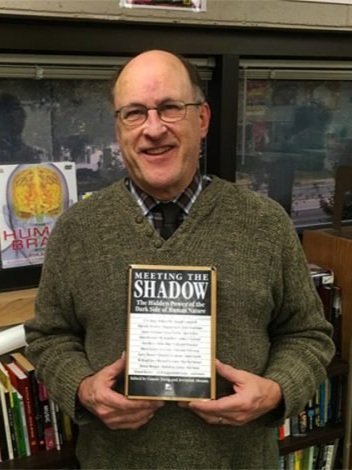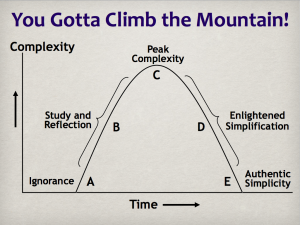Peak Complexity, Peak Oil, Peak Terror
By Bill Bornschein | October 17, 2012
I was fortunate to hear University of Washington professor Phillip Hansten’s talk at the recent EBF Fall Conference. His topic was what he refers to as “premature factulation,” which he defines as “the process of coming to conclusions without adequate study or contemplation; usually applied to complex concepts or situations.” The diagram below represents the basic dynamic.
Hansten’s book Premature Factulation provides many examples of this process as well as prescriptions for dealing more successfully with complex issues. Peppered with quotes from great thinkers across the ages, this book has the synthetic feel of Becker’s work and I recommend it.
As I looked at the Hansten diagram, M. King Hubbert’s famous oil depletion curve appeared in my mind’s eye. Hubbert’s Peak, as it is called, explains that the rate at which oil can be extracted follows a Bell curve and further, calculates that such a peak has already been reached. Indeed, global production of oil reached its apex in 2005. The economic downturn that followed shortly thereafter reflects our inability to project future growth based on cheap energy. Economic contraction is the new reality, regardless of which political party is victorious or what the consumers want. The laws of physics seem to stand quite independent of human desire.
As I compared the two models, the first thing that struck me was the role of complexity in the first half of the curve. The dramatic growth curve that has accompanied the age of oil really took off in the post-WWII era with the Green Revolution quadrupling global population and the advent of modern consumer culture more than quadrupling our, for lack of a better term, stuff. Indeed, our Apollonian ascent, which has provided the basic template for progress and heroism, has been fueled by vast amounts of cheap, easy-to-get oil. As we pass through this gate of history, we bear witness to the consequences of the collapsing hyper-complexity, from our undecipherable financial instruments to our interconnected food and energy delivery systems, to our far-flung military superstructure and beyond. The stop-and-start nature of our economic recovery is evidence of the change as a recalibration ensues and we continually adjust to the new normal, downscaling and localizing. Elsewhere I have suggested the emergent localism as an opportunity for a more practical heroism of scale involving more face-to-face interactions. At the same time, it is potentially an opportunity for panic and terror on scale that is horrific.
When considering the potential for panic and horror I often direct my students toward reflecting on our biggest symbols, like the cross or the flag, as a way of understanding symbolic immortality and its consequences. Reflecting again, in light of Hansten’s presentation, the very complexity of our symbolic immortality system really comes to the fore. It’s not just the archetypal symbols, it’s all the little stuff we take for granted; the designer label, the exclusive membership, the branded product loyalty. I’m guessing that this is where the early apprehension of panic will register. Ernest Becker’s ideas would be most useful at this point in the process, giving the better angels of our nature, if not ground to stand on, at least ground to hover over. Here, at the tipping point, Becker’s work could paradoxically be a life saver. The question is how to get the word out. I have advocated getting Becker in the hands of artists, the re-mythologizers who could get these ideas to a mass audience.
While still maintaining this view, Hansten’s model provided new insight.
Since encountering Becker I’ve been frustrated, as I’m sure some of you have as well, by the difficulty of getting folks to pick up on his work. The ideas are so important, the argument so well crafted, and with the Mortality Salience Hypothesis so demonstrable, how can people not get it? The voice of Becker whispers, “Yes, Bill, it’s called denial.” Okay, I get that. Still … this is where Hansten’s model is helpful. Upon reaching peak complexity in the problem-solving process, and having done the requisite reflection, an ideational breakthrough occurs, which Hansten calls “enlightened simplification.” As it is applied in the real world, it becomes “authentic simplicity.” What might this mean for our problem of peak oil and peak terror? It indicates that there may be a point at which a significant part of our culture of denial can give way to more authentic realism. One reason that denial is so readily available to moderns is the very complexity of our world. We can readily be the Kierkegaardian philistine, distracted by the trivial. As the nature of our predicament becomes more apparent, we will have less time for trivia and necessarily more focused on the basics. Much like the addict who must hit bottom to escape his own denial, so too our culture must sober up to move forward. Becker’s ideas, I believe, will find a more receptive audience as the crisis deepens. The power and simplicity of his core insights will match the “authentic simplicity” our earthier society will require.


